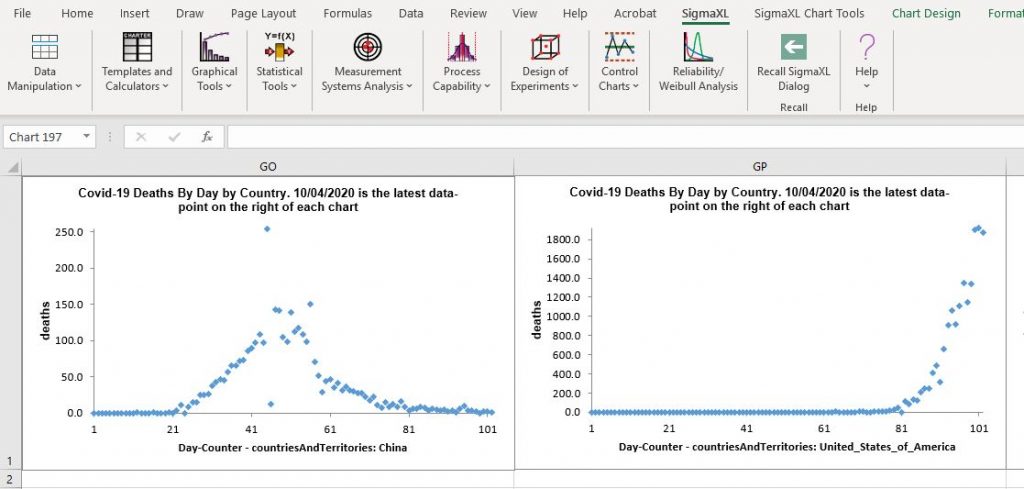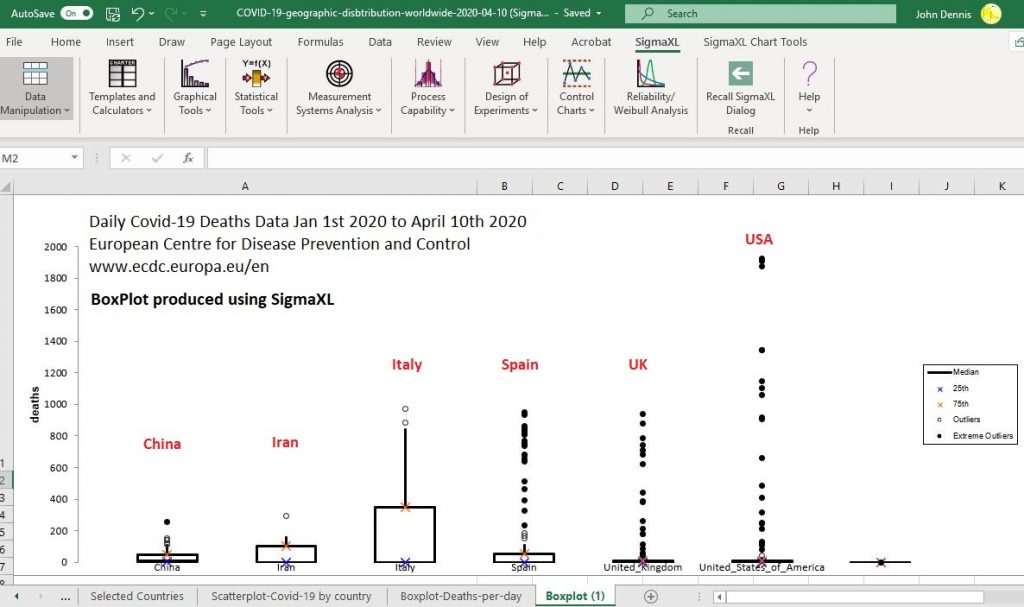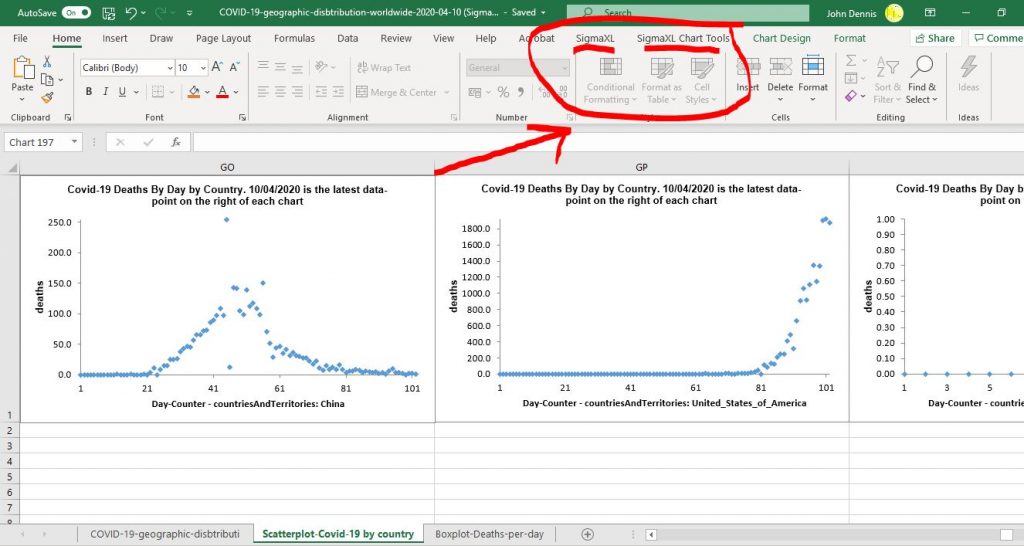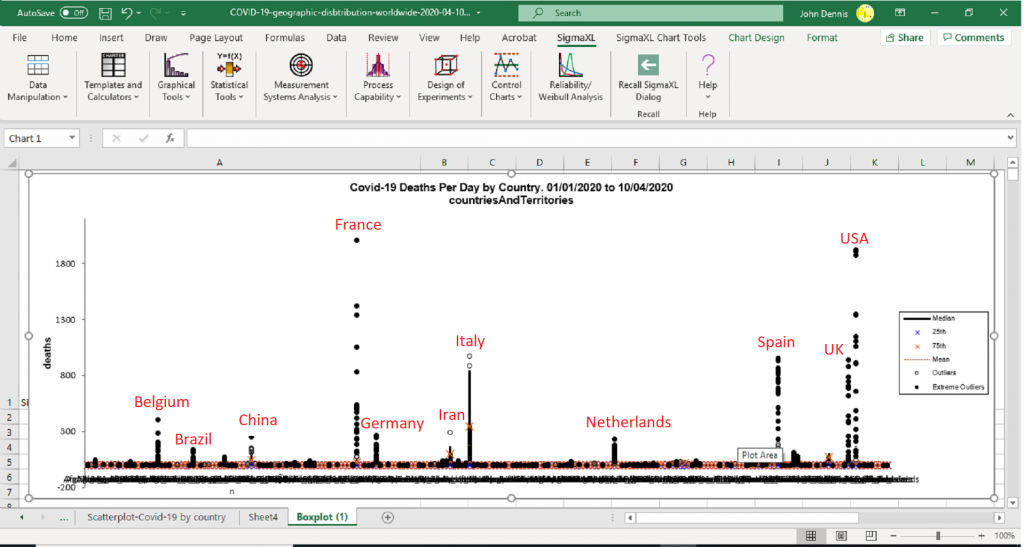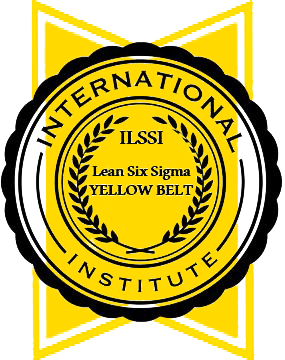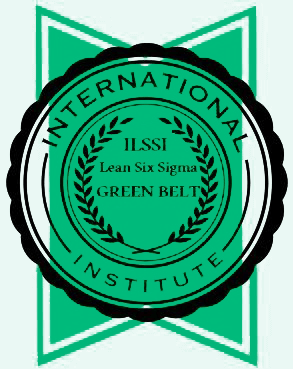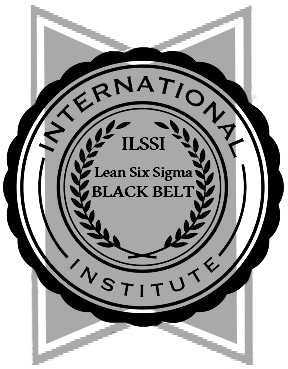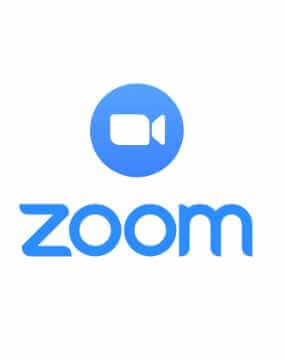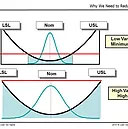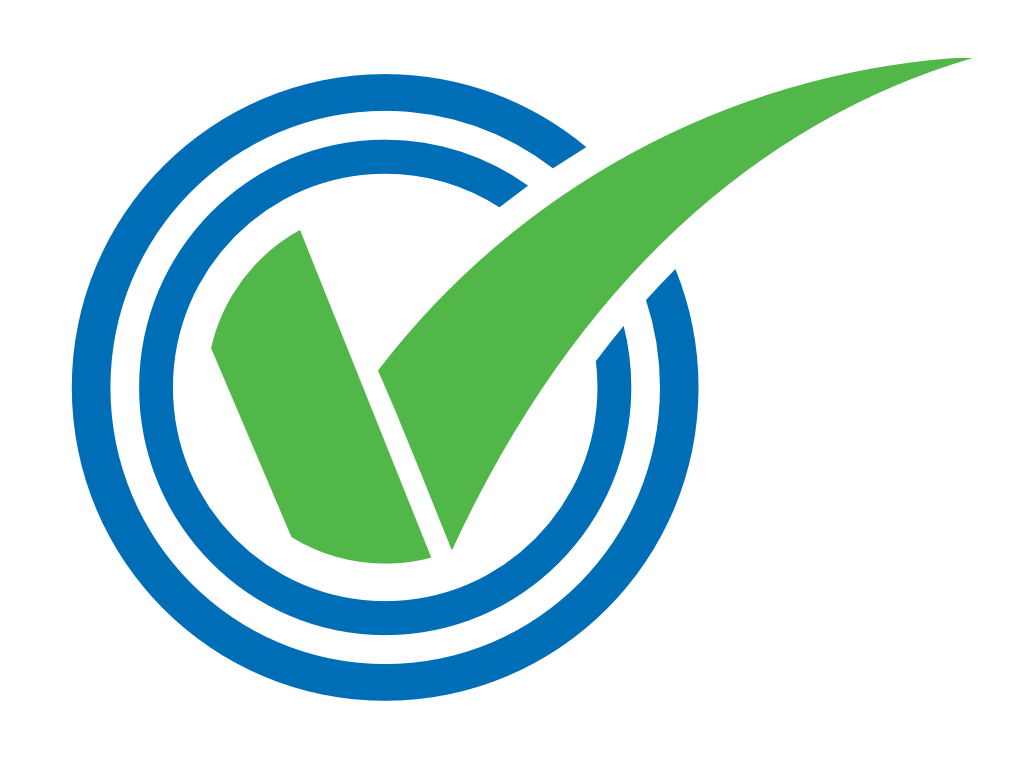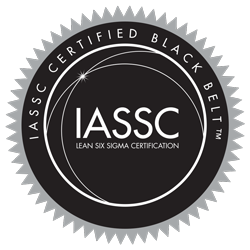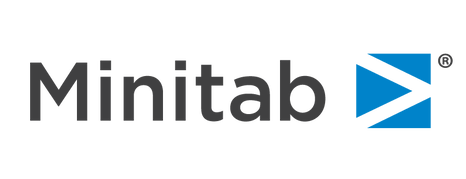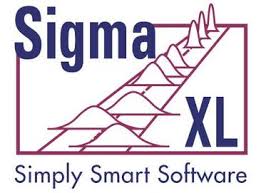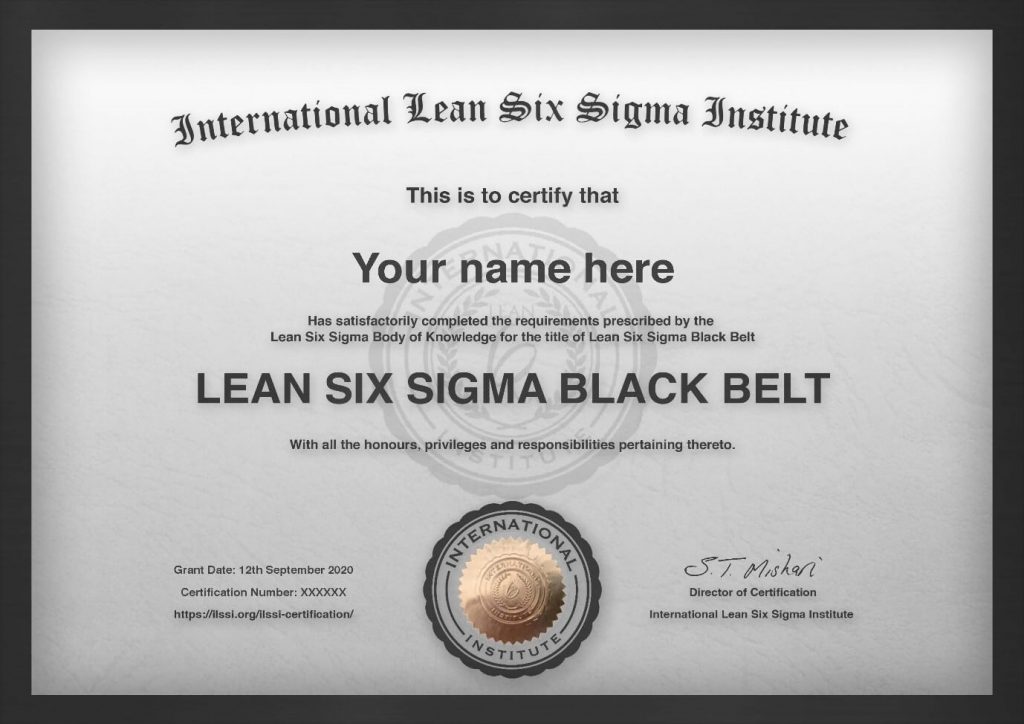
Online Black Belt course certification
£595 £495
- Accredited by International Lean Six Sigma Institute ILSSI.org
- High Quality Videos – over 8 hours of videos
- Downloadable Online Study Guides as PDFs
- Downloadable exercises and templates in Excel ( for data analysis )
- Case Studies
- App for iPhone or Android Phones
- End of Chapter Multiple Choice Test Questions
- Course availability – 180 days ( extensions available for £25 )
- Certificate and online Registration as Accredited ILSSI Lean Six Sigma Black Belt with Credential.net
The certified Black Belt will have the knowledge and tools to be able to lead projects and guide on Change Management and Risk Management.
In addition the courses cover data analysis and statistical techniques and tools. It provides examples using SigmaXL as the stastistical analysis tool and the student can also practise the exercises using downloadable data in Excel workbooks.
The course consists of 60 modules which cover all Black Belt Body of Knowledge (BoK) as well as the Yellow Belt and Green Belt BoKs. See the downloadable online study guide.
COURSE LEARNING OBJECTIVES
The Online Lean Six Sigma Black Belt training course provides the detailed understanding of the methodologies, tools and techniques of Lean and Six Sigma necessary for leading teams and coaching and mentoring other employees for reduction in costs, cycle-times, improved quality, and elimination of waste. The certified Black Belt will be trained with the tools and understanding of Lean Six Sigma methodology necessary to make strategic decisions and consider the impacts of projects and changes at an enterprise level.
The training emphasises a disciplined and data-driven decision making approach for leading problem-solving projects. The course presents all the key concepts necessary to prepare student as a Lean Six Sigma Black Belt .
COURSE OUTLINE: Online Lean Six Sigma Black Belt course
The ILSSI Certificate in Lean Six Sigma Black Belt is a confirmation of your ability to manage enterprise wide improvement projects spanning value streams made up of multiple departments and functions, successfully working with a team of subject matter experts to apply Lean Six Sigma principles, tools, and methods to perform complex assessments and analyses to solve problems, eliminate waste and constraints to flow, and improve processes. As a Lean Six Sigma Black Belt, you are also able to assist senior management in developing and implementing a highly-customized enterprise deployment of Lean.
It is recommended that you complete the required courses in the following order:
L001 Introduction to Lean
S001 Introduction to Six Sigma
L002-2 Introduction to Kaizen
L002-3 Using the A3 Report for Rapid Improvement
L002-4 SIPOC Mapping
L003-1 Understanding and Implementing 5S/6S
L003-2 Implementing and Facilitating Lean “Huddles”
L003-3 Visual Workplace
L003-4 Standard Work
L004-1 Mapping the Process
L004-2 Spaghetti Diagrams
L004-3 Gemba (Waste) Walks
S002-1 Failure Modes and Effects Analysis
S002-2 Error-Proofing/Mistake-proofing
L005-2 Managing Change
L006-1 Brainstorming, Affinity Diagrams & Team Voting
L006-2 Cause & Effect Diagrams & the Five Whys
L006-3 Pareto Charts and the 80/20 Rule
L007 Value Stream Mapping
L008 Kanban and Material Management
L009-1 Work levelling/Load Balancing
L009-2 Work Cell Design & Improved Office/Facility Layout
L010 Rapid Changeover Techniques/SMED
L011 Total Productive Maintenance (TPM)
S020-1 Voice of the Customer – Kano Analysis
S020-2 Voice of the Customer – Net Promoter Score
L013 Lean Deployment Strategy and Methods
L014 Lean and Green: The Environmental Benefits
S001-1 Introduction to DMAIC
L002-1 Writing Effective Problem Statements
L005-1 Constructing Project Charters
S003 Controlling the Process
L012 Process Control Plans and Control Charts
S004 Assessing Process Capability
S005 Introduction to Basic Statistics
S006-1 The Normal Distribution
S006-2 The Standard Normal (Z) Distribution
S006-3 Testing for Normality
S007-1 Graphical Analysis – The Histogram
S007-2 Graphical Analysis – The Boxplot
S007-3 Graphical Analysis – The Scatter Plot
S008 Central Limit Theorem and Confidence Intervals
S009 Introduction to Hypothesis Testing
S010 Data Collection and Sampling
S011 MSA – Gauge R & R Studies
S012 MSA – Attribute Agreement Analysis
S013-1 Process Capability Measures – Discrete
S013-2 Process Capability Measures – Continuous
S014 Correlation and Simple Linear Regression
S015 Discrete & Continuous Probability Distributions
S016 Hypothesis Testing – Mean and Median
S017 Test for Equal Variance
S018 Analysis of Variance (ANOVA) and ANOM
S019-1 Proportion Testing
S019-2 Chi-Square Analysis
S021 Use of Data Transformation in Analysis
S022 Introduction to Logistic Regression
S023 Introduction to General Linear Models (GLM)
S024 Introduction to Reliability Life Data Analysis
S025 Introduction to Design of Experiments (DOE)
S028 Introduction to Design for Six Sigma
When you have completed the required courses, you can unlock your certificate.
